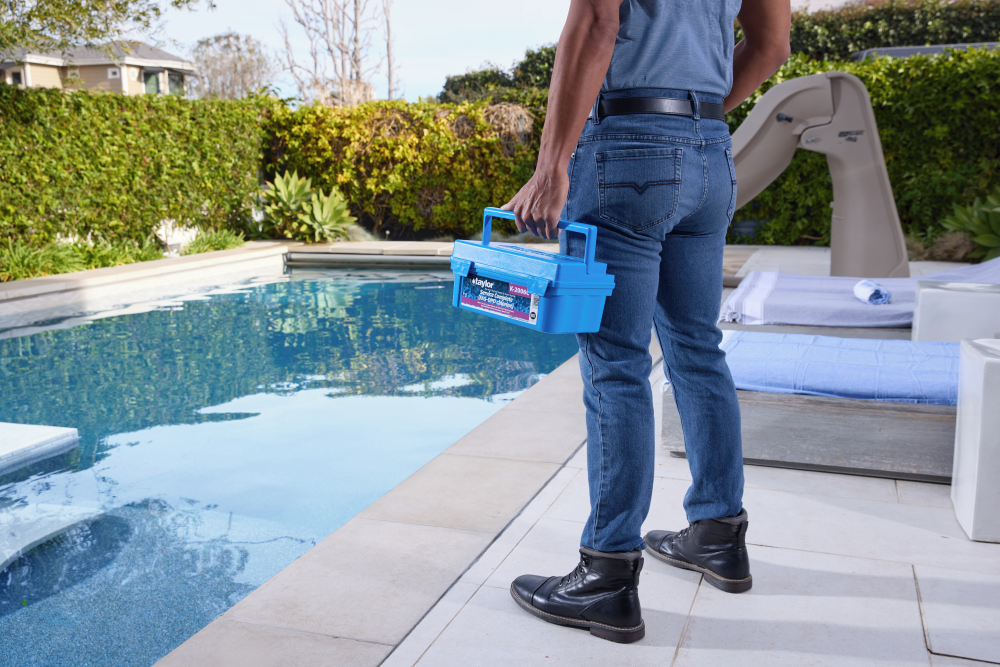For monitoring water quality in chlorine-sanitized pools and spas, DPD (N, N-diethyl-p-phenylenediamine) chemistry has become the standard. DPD can differentiate the active sanitizer, termed “free available chlorine”, to determine whether an adequate residual exists to properly disinfect the water.
When DPD in liquid or tablet form is added to a water sample, a pink color forms with an intensity proportional to the chlorine concentration (either free or total, depending on the step you're on in the procedure). In a standard DPD test, the color of the treated sample is then compared to a set of color standards supplied by the test kit manufacturer. Subtracting the free chlorine reading from the total chlorine reading gives you the amount of combined chlorine in the water.
Combined chlorine (or chloramines) is an ineffective sanitizer that is responsible for causing eye and mucous membrane irritation and the so-called "chlorine smell" associated with poorly maintained pools. Combined chlorine is eliminated by superchlorinating (shocking) to the “breakpoint” dosage. Calculations for breakpoint chlorination depend on knowing the amount of combined chlorine in the water, which is why DPD is the standard for testing chlorine-sanitized pools.
Most service professionals and health officials prefer testing chlorine with FAS-DPD. (FAS is an acronym for ferrous ammonium sulfate.) This variation of the traditional DPD method allows users to measure both free and combined chlorine levels as low as 0.2 ppm—the maximum allowable level for combined chlorine according to the Pool & Hot Tub Alliance (PHTA)—and as high as 20 ppm.
In FAS-DPD titration, a buffered DPD indicator powder is added to a water sample and reacts with chlorine to produce the pink color characteristic of the standard DPD test. FAS is then added drop by drop until the pink color completely and permanently disappears, signaling the endpoint of the reaction. To get the reading, the number of drops used to cause this color change is multiplied by the appropriate factor for the size of the water sample (supplied by the manufacturer). The second part of the FAS-DPD test determines the amount of combined chlorine present (mono-, di-, or trichloramines) by the number of drops needed to turn the sample from vibrant pink to colorless again.

The distinct change from a vibrant pink to no color eliminates the need for color matching. This means when testing samples with a high level of sanitizer, the user does not have to distinguish between relatively close gradations of color or be concerned that any color has been bleached out of the sample. It also makes it easier to use for those with color vision deficiencies.

